The influence of HK2 blood group antigen on human B cell activation for ABOi-KT conditions
- PMID: 29246114
- PMCID: PMC5732526
- DOI: 10.1186/s12865-017-0233-9
The influence of HK2 blood group antigen on human B cell activation for ABOi-KT conditions
Abstract
Background: It is well known that ABO blood group system incompatible kidney transplantation (ABOi-KT) is an effective strategy for end-stage renal disease. The main barrier for ABOi-KT is how to keep host B cell activation and blood group antibody titer in low levels. Moreover, the mechanism of B cell activation induced by blood group antigen was unclear in ABOi-KT.
Results: In this study, HK2 cells were identified to express blood group B antigen when cocultured with lymphocytes of blood group A. Optical microscope observation demonstrated that HK2 cells in coculture group gradually decreased. Furthermore, flow cytometer assay identified that T cell phenotypes (CD3+, CD3+CD4+ and CD3+CD8+) had no significant change and B cell phenotypes (CD19+ and CD138+) were all significantly enhanced (3.07 and 3.02 folds) at day 4. In addition, immunoturbidimetry analysis demonstrated that blood group B antibody was significantly increased to 2.35 fold at day 4, IgG was significantly increased to 3.60 and 2.81 folds at days 4 and 8 respectively, while IgM had no significant change at the measured time points.
Conclusions: Taken together, B cells were activated and secreted blood group B antibody after treatment with HK2 expressing blood group B antigen. The results of this study maybe useful for further determination of the mechanism of B cell activation after ABO incompatible kidney endothelial cells stimulation.
Keywords: ABOi-KT; B cells activation; Blood group B antibody; Blood group B antigen; HK2.
Conflict of interest statement
Ethics approval and consent to participate
Written consent was obtained from the participants. The experiments were approved by the Animal Welfare and Research Ethics Committee of the Institute of University of South China.
Consent for publication
Not applicable.
Competing interests
The authors declare that they have no competing interest.
Publisher’s Note
Springer Nature remains neutral with regard to jurisdictional claims in published maps and institutional affiliations.
Figures

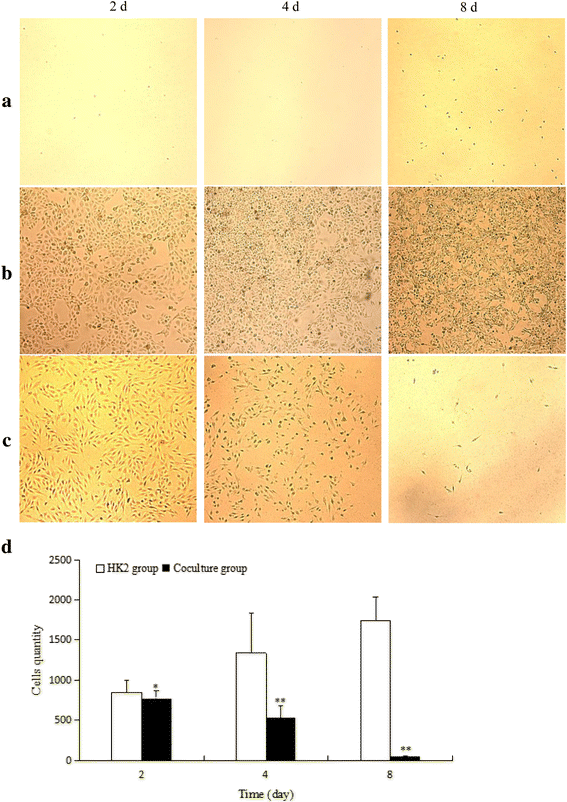
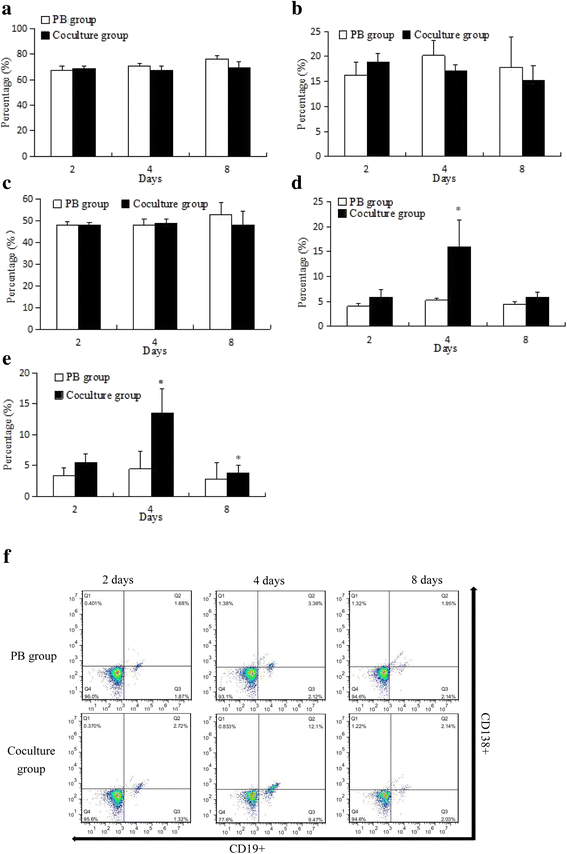
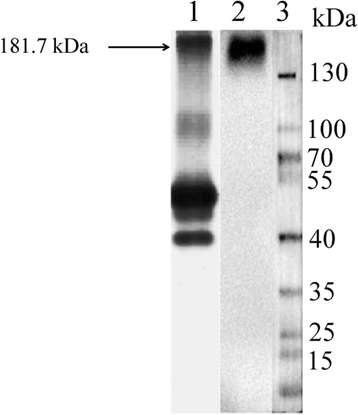
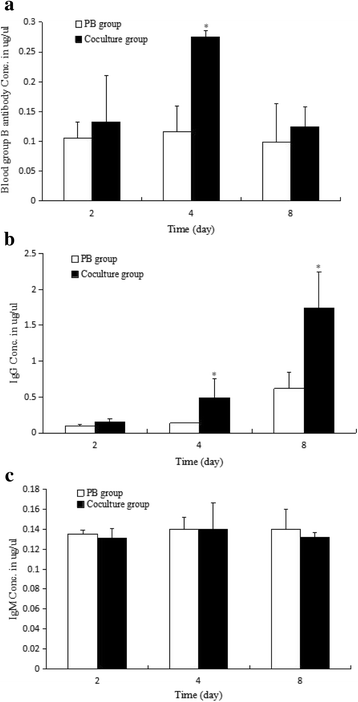
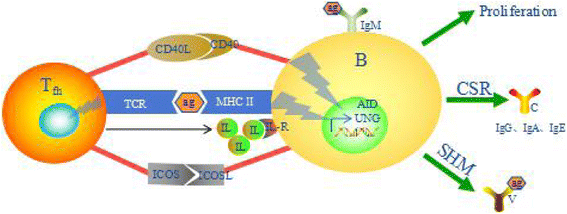
Similar articles
-
Development of B-cell memory in early childhood and the impact on antigen-specific tolerance after heart transplantation.J Heart Lung Transplant. 2016 Apr;35(4):491-9. doi: 10.1016/j.healun.2015.12.009. Epub 2016 Jan 6. J Heart Lung Transplant. 2016. PMID: 26856666
-
C3d plasma levels and CD21 expressing B-cells in children after ABO-incompatible heart transplantation: Alterations associated with blood group tolerance.J Heart Lung Transplant. 2014 Nov;33(11):1149-56. doi: 10.1016/j.healun.2014.04.023. Epub 2014 May 9. J Heart Lung Transplant. 2014. PMID: 24954883
-
Risk factors for postoperative bleeding in ABO-incompatible kidney transplantation.Clin Transplant. 2015 Apr;29(4):365-72. doi: 10.1111/ctr.12525. Epub 2015 Apr 16. Clin Transplant. 2015. PMID: 25646784
-
Xenotransplantation and ABO incompatible transplantation: the similarities they share.Transfus Apher Sci. 2006 Aug;35(1):45-58. doi: 10.1016/j.transci.2006.05.007. Epub 2006 Aug 14. Transfus Apher Sci. 2006. PMID: 16905361 Review.
-
ABO-incompatible kidney transplantation.Transplant Rev (Orlando). 2013 Jan;27(1):1-8. doi: 10.1016/j.trre.2012.07.003. Epub 2012 Aug 15. Transplant Rev (Orlando). 2013. PMID: 22902167 Review.
Cited by
-
Identification of an activation-related protein in B cells in the ABO incompatible condition.Exp Ther Med. 2020 Jan;19(1):741-747. doi: 10.3892/etm.2019.8234. Epub 2019 Nov 22. Exp Ther Med. 2020. PMID: 31897108 Free PMC article.
References
-
- Subramanian V, Gunasekaran M, Gaut JP, Phelan D, Vachharajani N, Santos RD, et al. Mohanakumar, ABO incompatible renal transplants and decreased likelihood for developing immune responses to HLA and kidney self-antigens. Hum Immunol. 2016;77(1):76–83. doi: 10.1016/j.humimm.2015.10.014. - DOI - PubMed
Publication types
MeSH terms
Substances
LinkOut - more resources
Full Text Sources
Other Literature Sources
Medical
Research Materials

